12.6 Human Interactions with Karst and Caves
Human interactions with karst and caves have ranged from the sacred to the profane. Many karst features like cave entrance and springs have always served as natural focal points for human activities by providing two of life’s most necessities – shelter and water. Karst caves have been used as shelters by humans on every continent throughout human history. For example, Tabun Cave, near Mt. Carmel, Israel, shows evidence for periodic human/hominid occupation between 40,000 to half a million years ago.[1] Humans have continued to use caves for various purposes throughout history right up to the present day. They have been utilized for the storage of Roquefort cheese in France, as root cellars and storage of canned goods, milk, and whiskey in Kentucky, and as fuel caches by the Nazis in Slovenia (Figure 12.6.1). Caves were sometimes used as air raid shelters in Europe during World War II and have more recently been considered as potential nuclear fallout shelters. In Turkey and Hungary, cave sanatoria have been established to provide respiratory therapy for such conditions as bronchial asthma. Cave discotheques exist today in China and Cuba for those with entertainment in mind. As well, underground symphonies and musical concerts have been performed in several countries. Those more interested in extreme sports may be gratified to learn that underground hot air balloon expeditions have been undertaken in French and American caves in recent years.
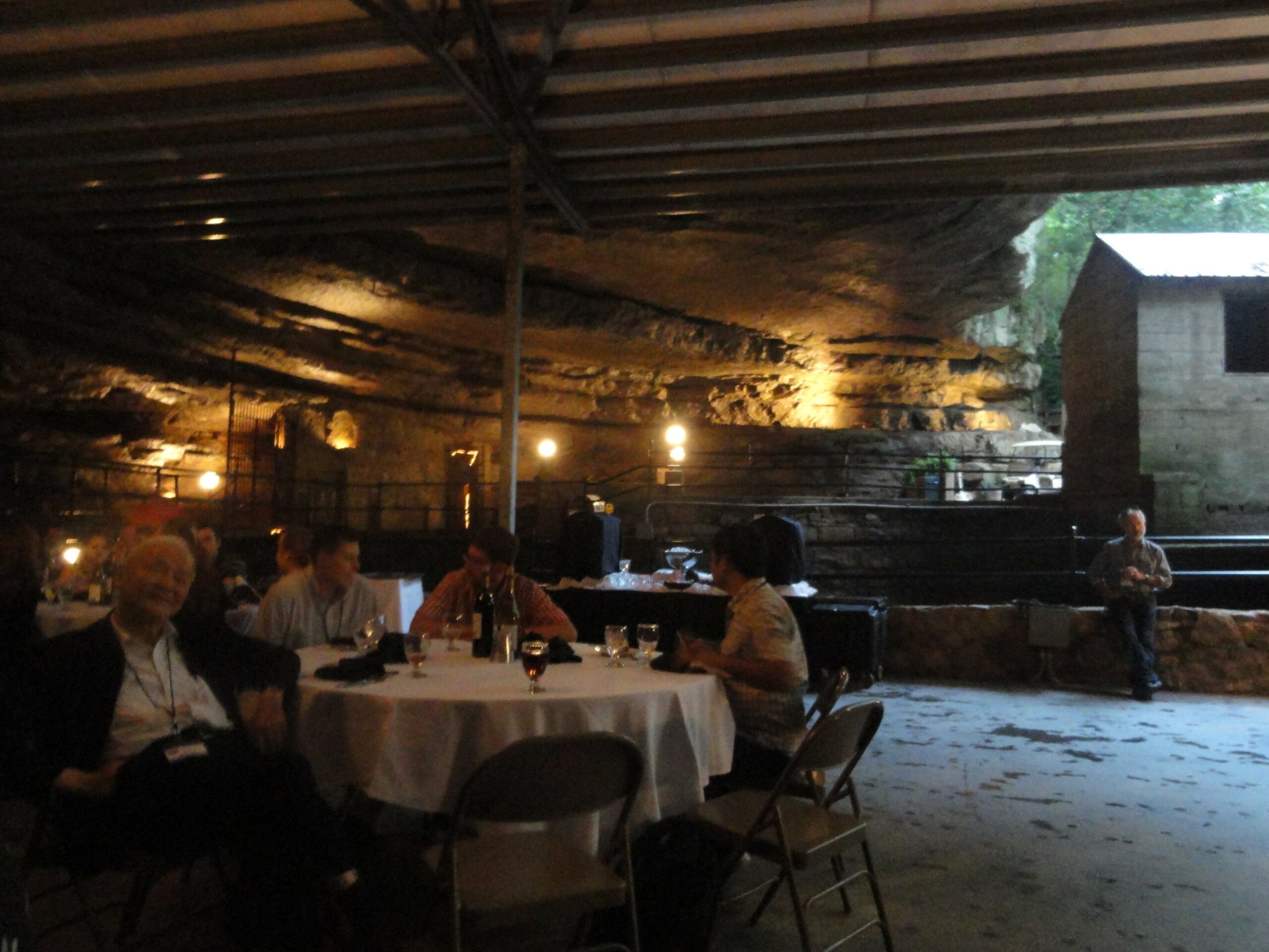
Subterranean drainage is one of the defining characteristics of well-developed karst landscapes. For this reason, knowledge of the locations of karst springs has been essential to humans inhabiting such regions in the past (Figure 12.6.2). For example, in Mexico’s Yucatan Peninsula. This huge limestone plateau, which has neither large lakes nor rivers flowing over the surface, supported the development and flowering of the Mayan civilization in pre-Hispanic times. Archaeological evidence suggests that though the Maya utilized water from cenotes and underground rivers for practical purposes, these karst features also played an important role in their religious rituals and beliefs. The use of caves as shrines, temples, or spaces for ritual activities has been widespread through human history, including Minoan sites in Crete, the Mayan caves, and cenotes in the Yucatan, and in various places in Asia. A small cave in Bocas del Toro, Panama, serves as a shrine and outdoor chapel today; it is also a pilgrimage site for Catholics, as is the much more famous Grotto at Lourdes.
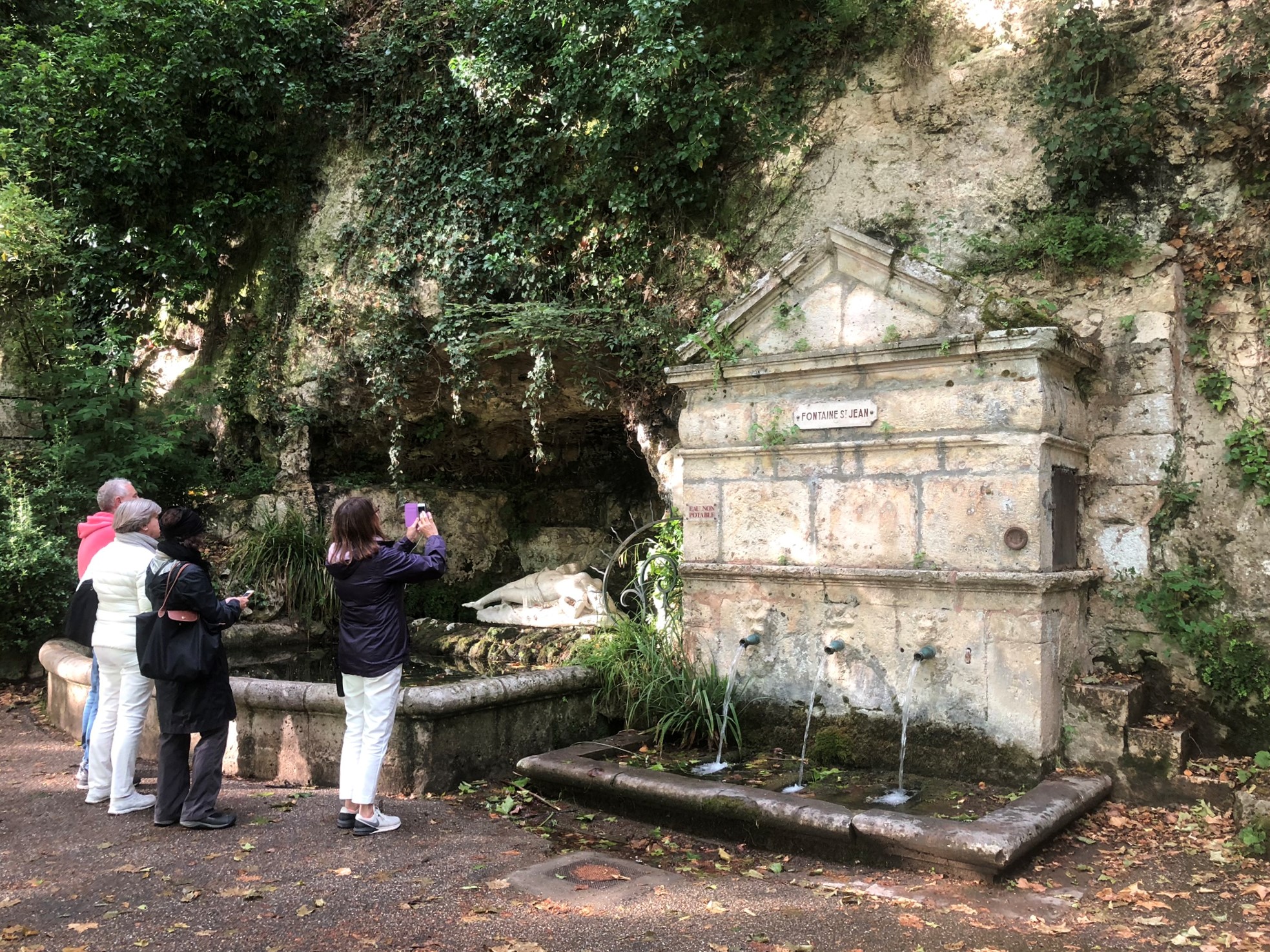
Many cultures have used karst features such as caves and sinkholes for more detrimental purposes. Dumping refuse in caves and sinkholes—a practice that can have negative implications on conservation—is still a relatively common practice in some parts of the world. The use of caves as places of internment for human remains has been quite common in some cultures in the past. People have also ventured into caves in search of various economic resources. For example, swift nests, the namesake ingredient in Bird’s Nest soup, have been harvested from caves on Thailand’s Phangnga archipelago for hundreds of years. This practice continues today.
Cave Conservation, Show Caves and Karst Parks
Caves—or some parts of caves—can be particularly vulnerable to disturbances caused by human visitors (Figure 12.6.3). Every trip underground entails some impact to the cave environment. Even by sitting motionless in an underground cavern, a single human is subtly altering the underground ecosystem. He or she is exhaling carbon dioxide, radiating body heat, introducing light and noise, shedding skin cells and hair, and transporting dirt or other foreign substances on his or her clothing and shoes. The cumulative effects of such subtle impacts can present real challenges to cave managers in popular show caves. Perhaps the single biggest conservation concern in caves revolves around preserving speleothems such as stalactites, draperies, and flowstone. Many of these calcite formations are very fragile and have taken hundreds or thousands of years to form. They can be broken by careless handling or soiled by contact with dirty clothing, boots, or hands. The best way to preserve such formations is to stay away from them altogether.

Conservation-oriented caving involves minimizing any trace of human intrusion in the underground environment, so that others may also enjoy it in its pristine state. Most cavers adhere to a Caving Code of Ethics.[2] Though these codes may vary somewhat in their wording, they can generally be summarized in the motto, “Take nothing but pictures; leave nothing but footprints”. Some cavers would argue that even leaving footprints constitutes an unacceptable human impact underground, and subscribe to the more demanding creed, “Leave no trace”. Because it is almost impossible for humans to leave no trace, particularly in low-energy parts of a cave, strict adherence to this creed sometimes requires that one refrain from entering such areas altogether.
A show cave is a cave that has been developed to facilitate access and viewing by visitors without the need for special equipment or skills. Show caves are often fitted with walkways, stairs, and lighting systems. Guides are frequently available to accompany groups of paying visitors, providing interpretation, and pointing out features of interest. The advantages of visiting show caves are that they are safely and easily accessible to most people, they are frequently very beautiful, interpretation is provided, and no special equipment, athletic prowess, or technical skills are needed to get in. Controlling the effects of infrastructure (such as walkways and lights) as well as impacts caused by large numbers of visitors passing through show caves can present real challenges to managers.
People usually have several options for viewing caves and karst in many regions of the world. On Vancouver Island there are cave and karst areas such as the Horne Lake Caves Provincial Park or Upana Caves, where people have access to self-guided and guided tours through safe, easily accessible wild caves as well as nature walks in typical west coast forested karst. People with sufficient funds can sign up for ecotours which include cave and karst viewing in more exotic locals such as Madagascar, Thailand, or Belize. Many countries such as France, Australia, the USA, and Slovenia have extensive karst that people can view or visit as they tour about on their own. Prince of Wales Island, Alaska, has an excellent infrastructure for self-guided karst viewing.
The Economic Values of Karst
Karst aquifers are of particular importance as sources of water for drinking, domestic use, and irrigation in regions where little surface drainage exists. Some bottled waters such as Evian (and Perrier) are obtained from karst springs and are especially valued by for their mineral content. Palaeokarst (karst that formed in the past and is preserved in the geologic record) can also serve as important reservoirs for oil and natural gas. Examples of these types of reservoirs are found in many parts of western Canada’s oilfields, such as the Leduc Formation.
One thing that the economic values listed above have in common is that all are based on resource extraction from karst. Resource extraction can have significant impact on many components of the karst system. It is also important to consider the non-extractive economic values of karst as well. For example, one non-extractive value pertains to a link between karst and fisheries. Alaskan research suggests that karst aquatic systems can be up to ten times more productive than non-karst systems, and possess various other qualities thought to boost fish productivity.
Today, the tourism and recreational potential of karst is increasingly recognized in many countries and may provide a sustainable alternative to resource extraction or an entirely new economic opportunity. Some karst has been popular with sightseers for centuries – the tower karst of Guilin, China, being an obvious example (Figure 12.2.2). Adventurous ecotourists today can go cave diving in cenotes of Belize and other parts of the Yucatan Peninsula, or visit the spectacular caves and limestone spires of Madagascar’s Tsingy de Bemaraha Park. In the long run, the trend toward interpretive ecotourism may raise public awareness as to the natural values of karst, and thus be beneficial for karst conservation efforts.
Agriculture and Forestry on Karst
Many agricultural practices involve clearing natural vegetation – either for crop cultivation or through grazing by domesticated herd animals. Disturbing the natural vegetation cover can alter water budgets in karst systems. Tillage can also disturb soils, leading to greater rates of erosion and subsequent increases if sediment moves into subsurface waterways. Agricultural chemicals such a herbicides, insecticides and fertilizers that are spread on karst lands as they can infiltrate into underlying karst aquifers. Likewise for animal waste products (e.g., effluents from manure lagoons) that enter karst hydrological systems and artificially alter subterranean nutrient balances and subsequently contaminate the water.
Forestry activities on karst can inadvertently lead to the disruption of shallow caves, the redirection of water flow during forest road construction, logging near sensitive features (e.g., large sinkholes) and the loss of soil into vertical solutional openings or epikarst. Fires can also be problematic on karst (Figure 12.6.5). Intense fires, such as those that occur when burning logging slash piles within a forestry cut block can destroy organic components in soil as well as root systems that hold the soil in place. On thinly soiled epikarst, such fires can result in soil loss through incineration and erosion, thus slowing or hampering the regeneration of the vegetation cover and new tree growth. Less intensive fires may not damage the soil cover on karst, but the burning regimen can still alter regrowth by favouring the survival of more fire-tolerant species. In BC there is a comprehensive set of inventory procedures and management guidelines for forestry operations on karst.[3] The intent of these guidelines is to use an ecosystem-based or catchment-based approach, rather than focusing on the management of individual karst features or caves.
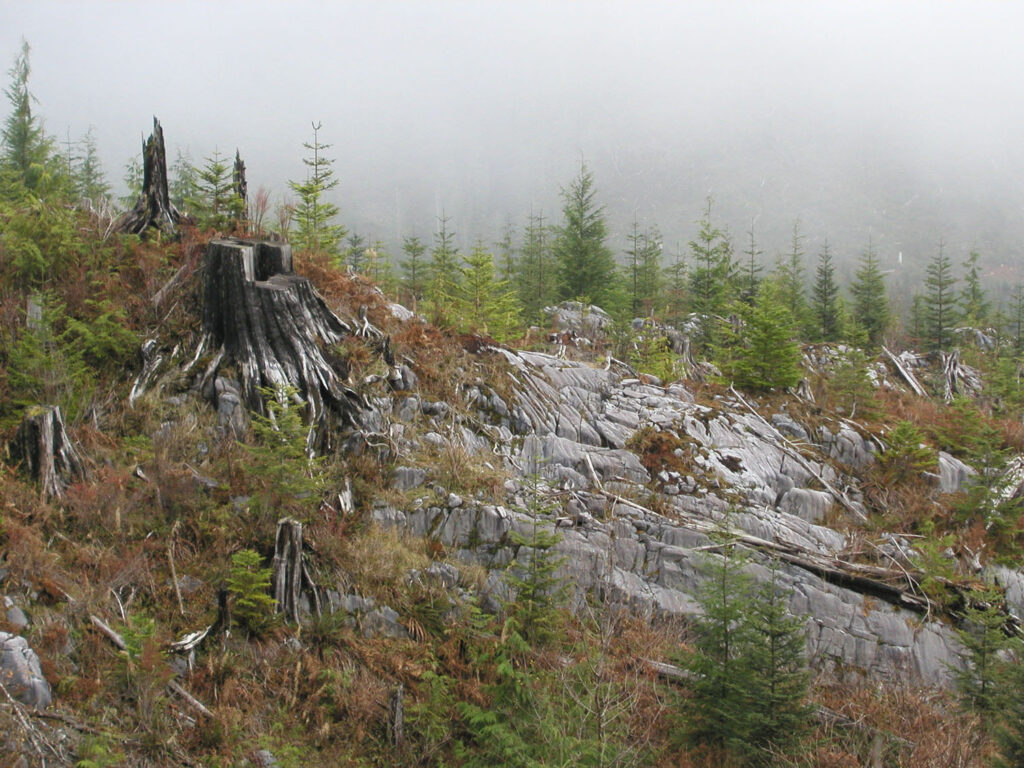
Engineering Projects on Karst
Karst terrain represents probably the most demanding environment for engineering projects due to its inherent variability and unpredictability. Investigations are required to reduce the primary hazards of ground instability and water infiltration, using techniques such as mapping, drilling of boreholes and geophysics. These techniques aid in locating underground cavities, assessing subsidence or sinkhole hazards, and evaluating underground water flow. Dams and reservoirs can be constructed on karst but factors such as the foundation stability and seepage beneath the reservoir, dam, and its side slopes (or abutments) needed to be considered along with mitigation techniques (e.g., grout curtains). Leakage may occur through fissures, caves, and conduits if they are not recognized and remediated. Tunneling projects in karst are of concern with groundwater being the principal hazard with the potential for rapid flooding and sediment inrushes (a major safety concern) and instability of the tunnel roof and walls. Dewatering of the overlying karst can also have significant environmental impacts ranging from declining yields in water wells and springs to sudden development of sinkholes.
Highways can be affected by subsidence and collapse of sinkholes – the result of foundation issues or redirecting storm water and surface runoff into soil cover above sinkholes. Pollution of groundwater due to surface runoff from roads must also be considered. Bridge abutments founded on karst should only be constructed after detailed site investigation to prove the foundations are located on sound bedrock. This may require the use of long concrete cylinders or “piles”. The foundations for buildings on karst require considerable knowledge of the subsurface karst. Grouting with concrete can be used to infill openings or they could be “bridged” with a concrete slab or raft. Good drainage control is required to avoid ground disturbance after construction. Due to the variability and high permeability of karst limestone through fissures, caves and conduits, the siting of landfill and waste dumps in these areas should be avoid. In all other above cases consideration should be given to the subsurface ecology, in some cases this aspect is forgotten. Quarries into karst bedrock need to consider the potential hazards from: flooding due to intersecting openings with high groundwater, dewatering which may lead to sinkholes and damage to structures outside the quarry property, and the stability of the excavated slopes that is controlled by both rock structures and groundwater under pressure. In some cases, engineering projects may mistakenly overlook the ecological values of karst such as associated with subsurface fauna.
Managing Karst Landscapes as Systems
All land development activities of karst areas required careful management for many reasons. At their outset, many surface development activities often entail clearing vegetation which is part of the karst system and intercepts rainfall and moderates the temperature of soils. On thinly soiled karst, removing vegetation can alter the amount of water percolating down into the subsurface, and it can also destabilize soils, resulting in increased erosion and the movement of sediments into subsurface cavities. Such sediments can choke underground water conduits in karst and redirect flows in unpredictable ways or cause back flooding, as well as damage sensitive cave resources (e.g., speleothems) (Figure 12.6.6). Road building can alter karst hydrology by impeding permeability in some areas and concentrating surface drainage in others. Moreover, runoff from these surfaces (especially in urban areas) can rapidly transport pollutants directly into subsurface watercourses. Other potential point sources of pollutants associated with land development on karst include sewage systems and landfill sites which not only have the potential to harm underground ecosystems, but also pose serious problems for surface-dwelling humans. Water carrying contaminants and pollutants introduced at one point can therefore be quickly transported far from the original sources with little opportunity for dilution. Surface development can also lead to increased demands for water. If increased demands for water results in too much water being withdrawn from karst systems, the hydrostatic pressure in underground void spaces may be decreased leading to collapse, resulting in serious damage to property and in some cases loss of life.
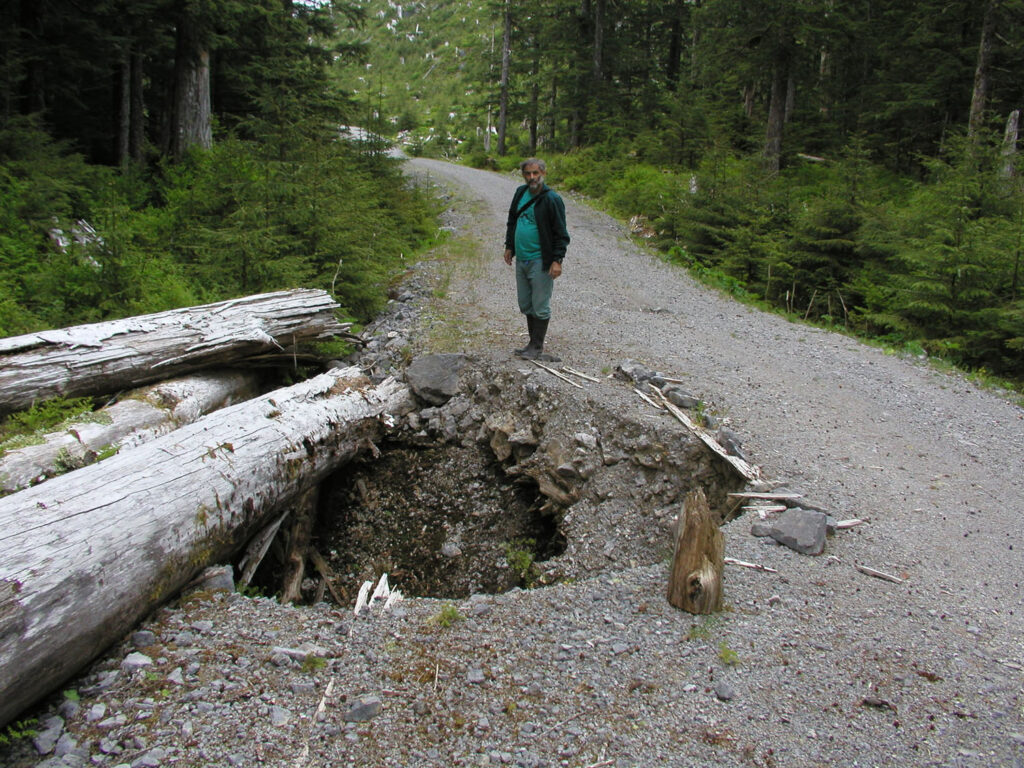
In conclusion, karst land management requires a cooperative, holistic approach in which all values (karst and non-karst) within a contributing hydrogeologic catchment need to be considered and addressed using policies and guidelines previously agreed upon by the various interested groups or stakeholders. This approach makes particularly good sense in karst catchments, because effective surface management will cater for all the interconnected values that make up the karst system: soil, bedrock, vegetation, water, biota, and air.
Exercise 12.4 Explore a Cave Near You
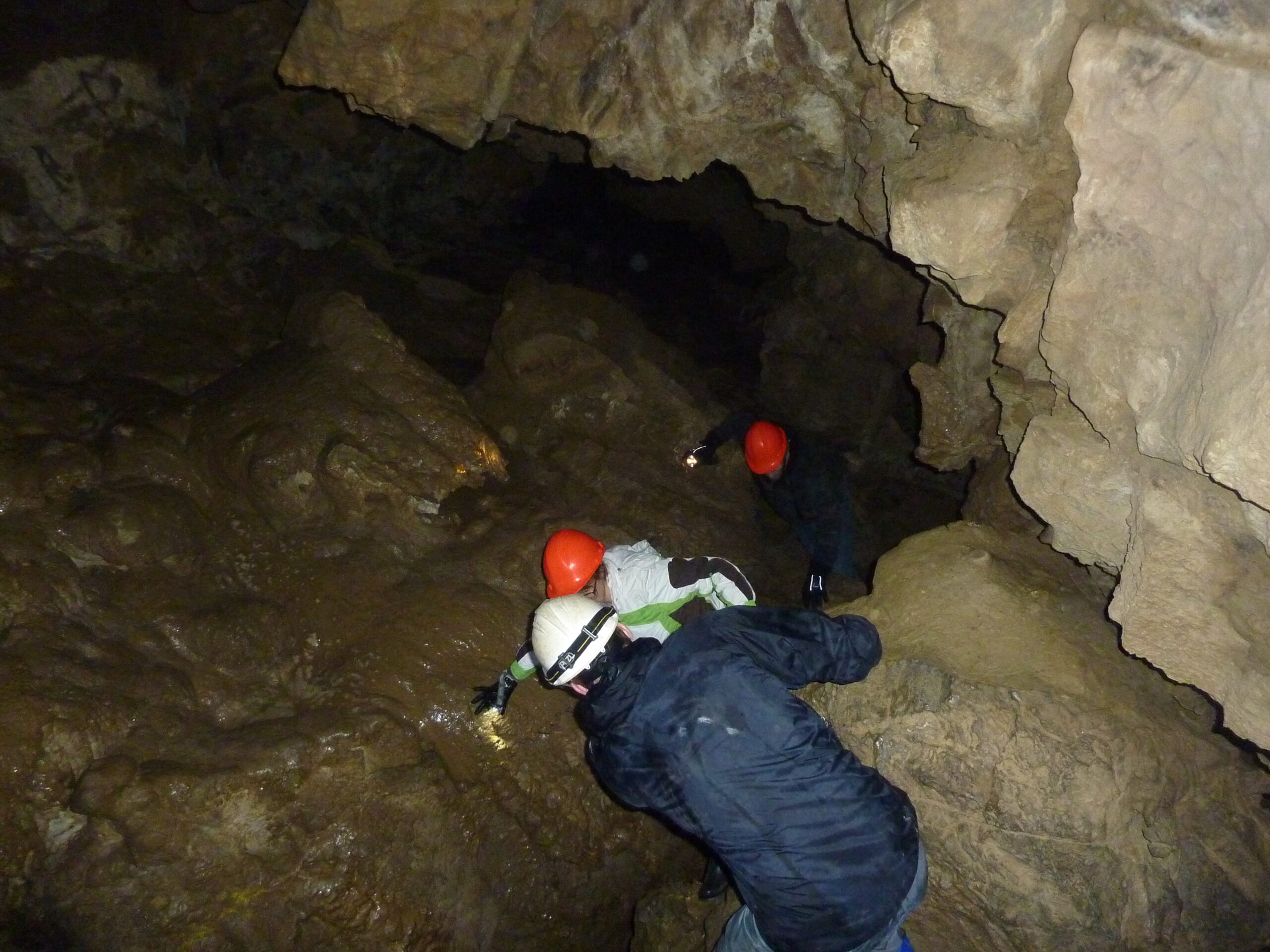
You may be lucky enough to live in a region that has caves that are accessible to the public. If so, consider visiting one and going underground (either with a buddy or a guide). If you go without a guide, make sure to have at least two reliable sources of light each, and wear a helmet! Be prepared to get dirty. On a hot day it’s likely to be much cooler inside the cave than outside, and the reverse applies to cold days. Check the forecast. Caving is not recommended if there is a prediction of heavy rain.
While you’re inside, look for some of the features that have been discussed in this chapter, such as speleogens and speleothems, cave sediments, and how bedding and fractures have influenced the cave morphology. You might be lucky enough to see some cave creatures.
If visiting a cave isn’t an option, then do some research into caves in your region, or your province or state. There are likely to be some photos available, so you might still be able to look for some of the features that you’ve learned about here.
Media Attributions
- Figure 12.6.1 Photo by T. Stokes, CC BY 4.0
- Figure 12.6.2 Photo by T. Stokes, CC BY 4.0
- Figure 12.6.3 Photo by T. Stokes, CC BY 4.0
- Figure 12.6.4 Photo by T. Stokes, CC BY 4.0
- Figure 12.6.5 Photo by P. Griffiths, CC BY 4.0
- Figure 12.6.6 Photo by Steven Earle, CC BY 4.0
- Trinkaus, E. (2006, July 13). Tabūn: Anthropological and archaeological site, Israel. Encyclopedia Britannica. https://www.britannica.com/place/Tabun-paleoanthropological-site-Israel ↵
- See, for example, International Union of Speliology (Speleology (UIS). (2020). Code of ethics for cave exploration, and science in foreign countries. https://uis-speleo.org/wp-content/uploads/2020/03/Code-of-Ethics-of-the-UIS-English-Language.pdf ↵
- BC Ministry of Forests. (2003). Karst management handbook for British Columbia: British Columbia Ministry of Forests. Research Branch. https://www.for.gov.bc.ca/hfp/publications/00189/karst-mgmt-handbook-web.pdf; and Resources Information Standards Committee (RISC). (2003). Karst Inventory Standards and Vulnerability Assessment Procedures for British Columbia: British Columbia Ministry of Forests (v.2). https://www2.gov.bc.ca/assets/gov/environment/natural-resource-stewardship/nr-laws-policy/risc/karst_risc.pdf ↵
